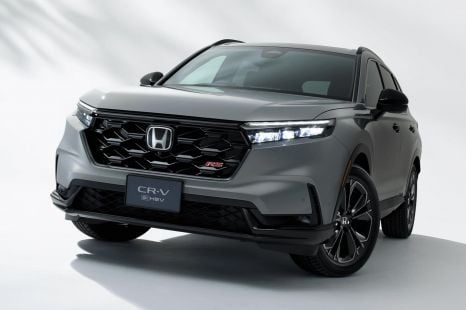

James Wong
Honda Australia: CR-V should be number one in segment, Japan previews incoming updates
2 Days Ago
With the new CR-V, Honda Australia is finally offering a hybrid option. Does it have what it takes to take on the Toyota RAV4 Hybrid?
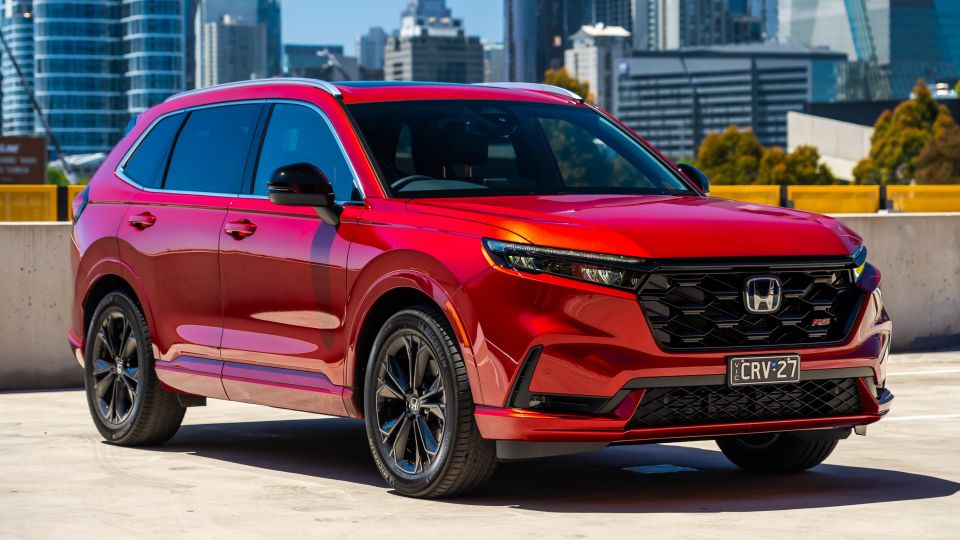
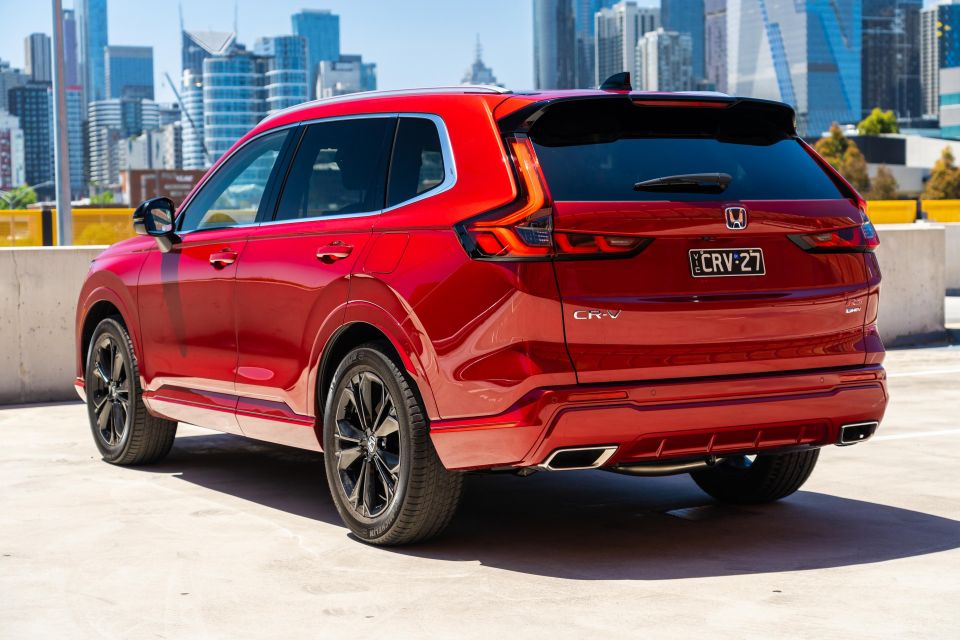

Quickly see how this car stacks up against its competition. Select any benchmark to see more details.
Where expert car reviews meet expert car buying – CarExpert gives you trusted advice, personalised service and real savings on your next new car.
The previous-generation Honda CR-V, much like the rival Nissan X-Trail, was offered with a hybrid powertrain overseas. Alas, neither the CR-V Hybrid nor its electrified X-Trail rival were offered here.

Note: This article is based off our most recent review of the CR-V, as specification has seen no major changes since publication.
We have updated key details such as pricing and specifications with the most up to date information available, and added imagery of the latest model where applicable.
Read the latest price and specs article here for all the details.
But then Toyota came along with its RAV4 Hybrid – also belatedly, given we missed two generations in Australia – and was an immediate smash hit.
The hybrid option has helped keep the RAV4 atop the sales charts, while wait times have blown out. Now, both Honda and Nissan are looking to cash in on rampant demand.
Honda hasn’t jumped in with both feet just yet. Where Nissan offers three X-Trail e-Power variants in Australia, and Toyota lets you choose from nine versions of the Toyota RAV4 Hybrid, there’s just one CR-V e:HEV on offer in local showrooms.
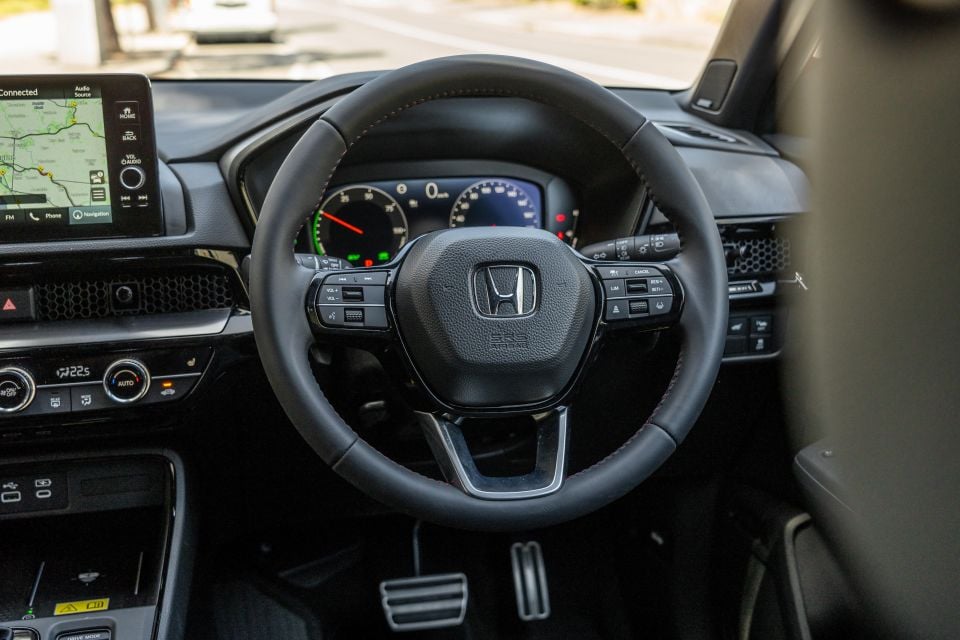
It’s not offered with all-wheel drive, and is based on the most expensive RS trim level – which means it has a sticker price around $60,000 drive-away.
Is the only Honda CR-V hybrid you can buy in Australia a good one?
Prices for the CR-V appear to have risen slightly in recent months, with Honda advertising nationwide drive-away prices $500 dearer than earlier this year – meaning the CR-V e:HEV RS on test is $60,400 drive-away.
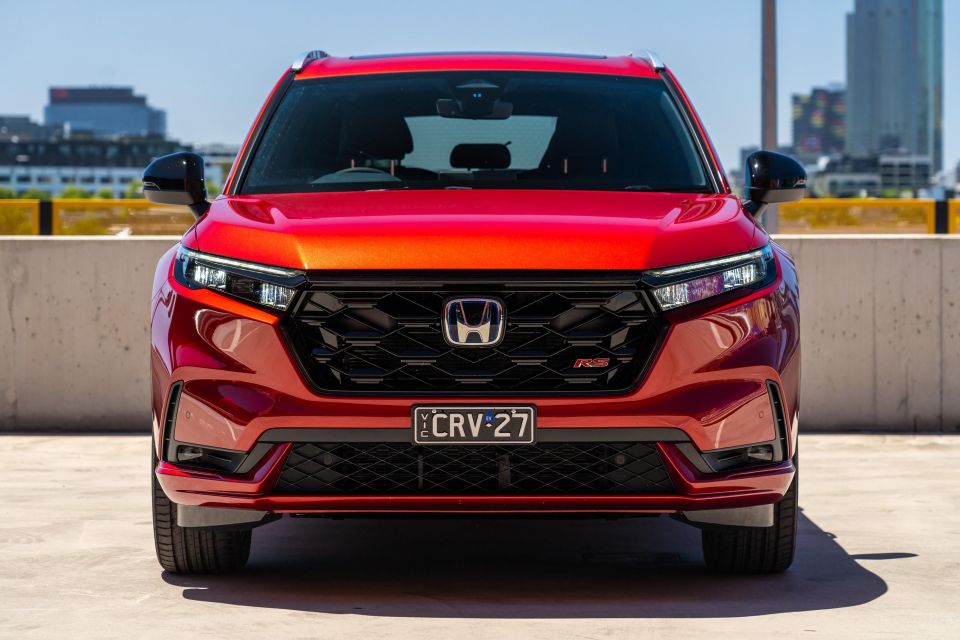
| Model | Drive-away pricing |
|---|---|
| Honda CR-V VTi X+ | $44,700 |
| Honda CR-V VTi X7 | $47,300 |
| Honda CR-V VTi L | $49,300 |
| Honda CR-V VTi L AWD | $51,800 |
| Honda CR-V VTi L7 | $53,500 |
| Honda CR-V VTi LX AWD | $57,500 |
| Honda CR-V e:HEV RS | $60,400 |
To see how the Honda CR-V lines up against the competition, check out our comparison tool.
Buy your new car without the stress. It's fast, simple and completely free.

Great service from Travis and team, second time I have used this business would not hesitate to recommend them to anyone
Craig C.
Purchased a Ford Ranger in Sunshine Coast, QLD
CarExpert helped Craig save thousands on his Ford Ranger, now let us save you on your next new car.
Find a dealThere’s a quality feel with the CR-V, which you can notice even upon simply opening the driver’s door.
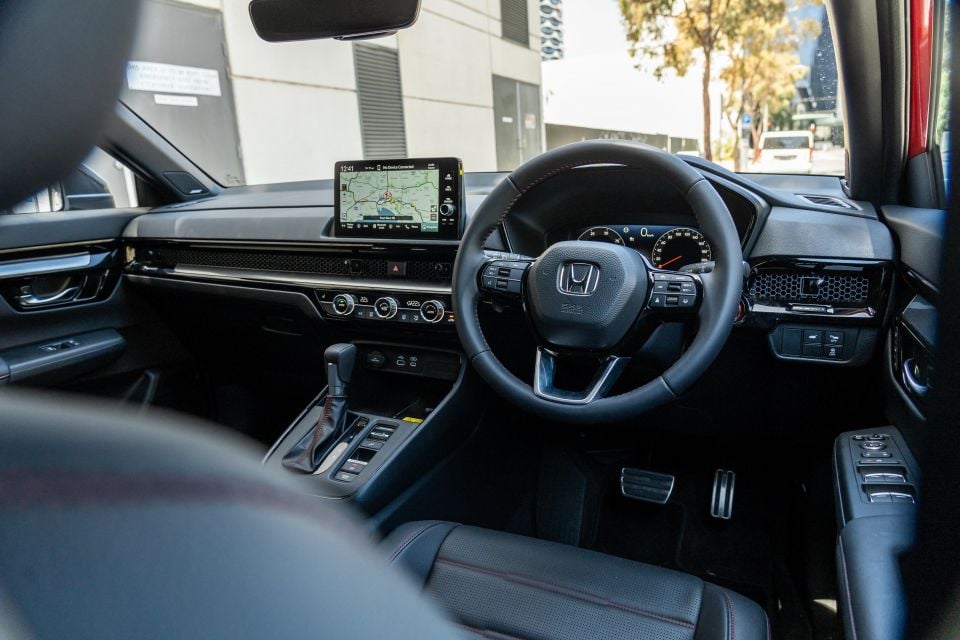
It doesn’t feel tinny, and the door cards are finished in a mix of soft-touch plastic and leatherette.
The driver’s seat moves back as you get in, and then as you settle into the comfortable, almost European-looking leather-appointed seats and get ready to move, it slides closer to the steering wheel.
There’s also two-person memory for the driver’s seat, and heating for both front seats.
Ahead of you is a 10.2-inch digital instrument cluster, flanked by a couple of simple bar displays for battery and fuel levels. It’s vastly more modern in appearance than the old CR-V’s instrument cluster screen, and there are various display options.
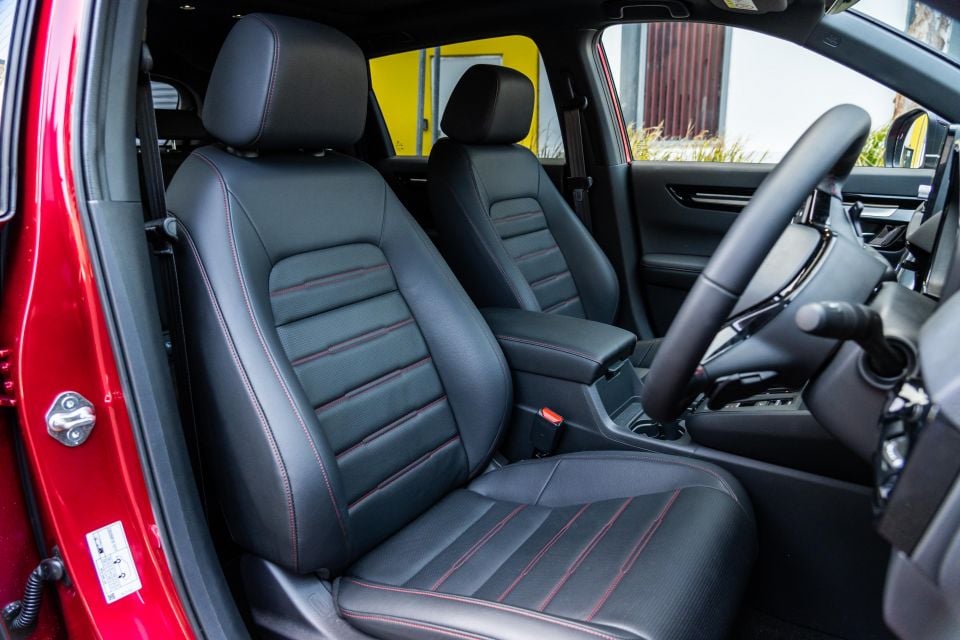
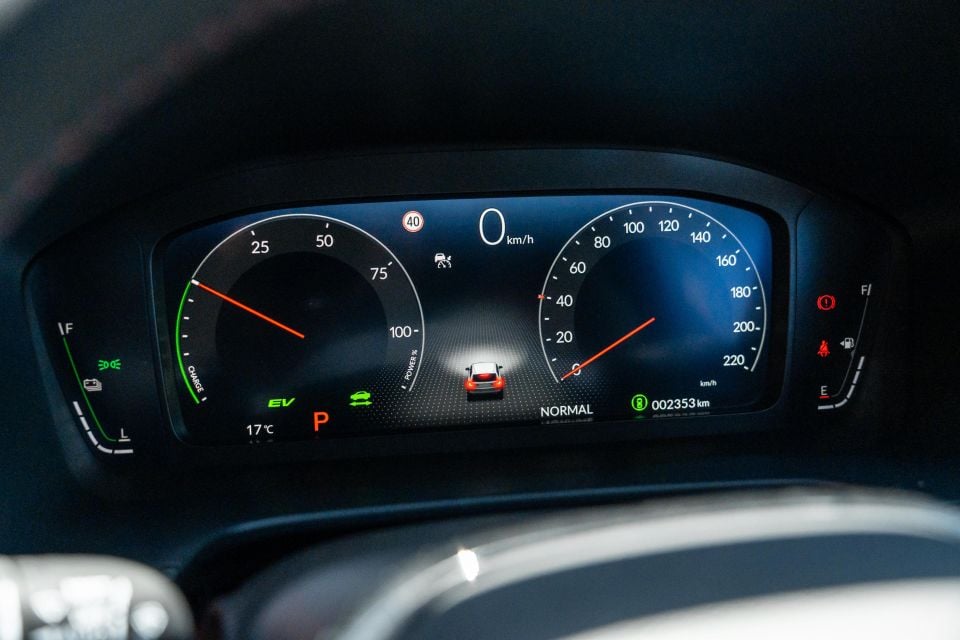
You can have simple analogue-style gauges flanking a cute display of the vehicle, which shows whether the lights are on, where the vehicle is placed within its lane, and even if there are other cars or trucks nearby.
You can choose to have widgets within the analogue gauges, too – I chose to have my Android Auto track info on the left gauge, and fuel economy on the right. Turn-by-turn navigation instructions, even for Google Maps, also appear in the cluster.
You can also choose to have a bar-style readout (I’m personally not a fan), and even have the gauges hidden when cruise control is on.
Moving over to the infotainment system, the new CR-V once again puts its predecessor in the shade. The menu structure will be familiar to existing Honda owners, but the graphics appear more polished and the screen is larger (9.0 inches vs 7.0 inches).
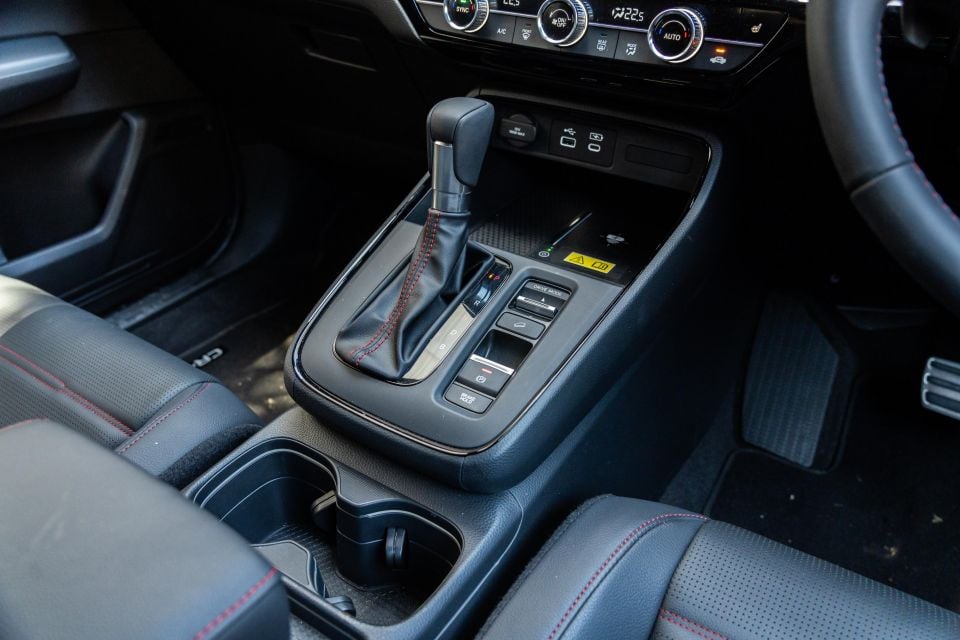
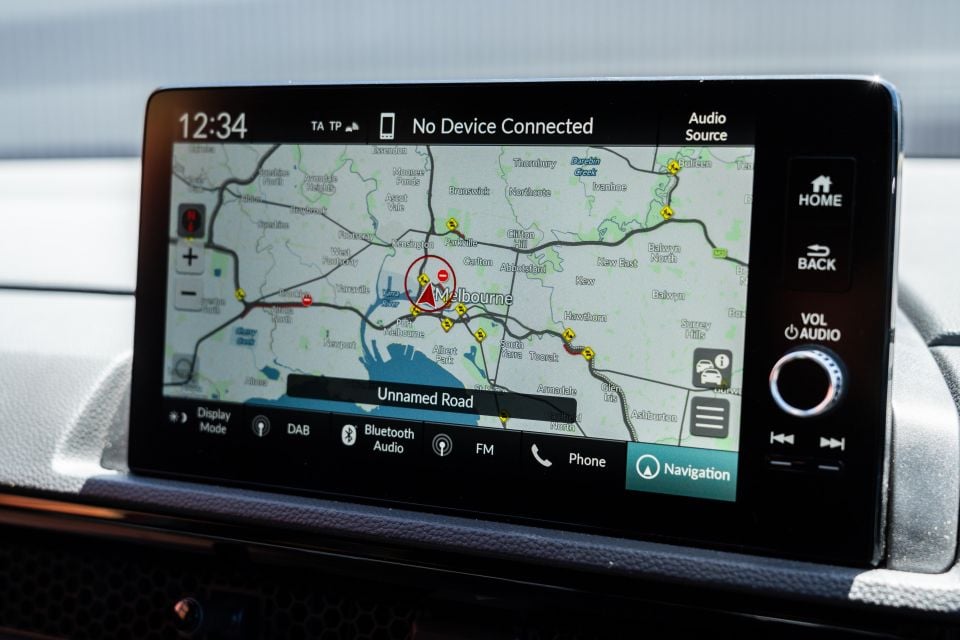
Not only is the new CR-V’s interior more modern-looking than that of its predecessor, it’s a bit more conventional in appearance.
The shifter has been moved further down for a less minivan-like appearance, and the wireless charging pad sits behind it which means your phone is less likely to go flying off at a fast turn.
The old CR-V had an enormous pit within the centre console with a sliding tray. The new CR-V’s centre console storage isn’t quite as voluminous, but there’s still a fairly deep bin with a padded lid, ahead of which sits a small rubberised shelf and a pair of cupholders.
The bottle holders in the doors can fit 1.5L water bottles.

There’s a cleaner, less plasticky look to the interior than the old CR-V. There’s not the kind of leather-wrapped look to the dash top a Kia Sportage has, or the leatherette-padded centre console sides of a Mazda CX-5 or Mitsubishi Outlander.
In the CR-V’s favour, however, is Honda’s funky honeycomb-style trim stretching across the dashboard and concealing the air vents. The vents also have neat twisty toggles.
There’s a welcome bank of physical switches for the climate control, though unlike the HR-V and ZR-V the backlighting doesn’t glow blue or red when you adjust the temperature.
Gloss black trim has been used exclusively as an accent, instead of there being vast plains of the stuff, while attractive metal-look trim is used more prominently for contrast.
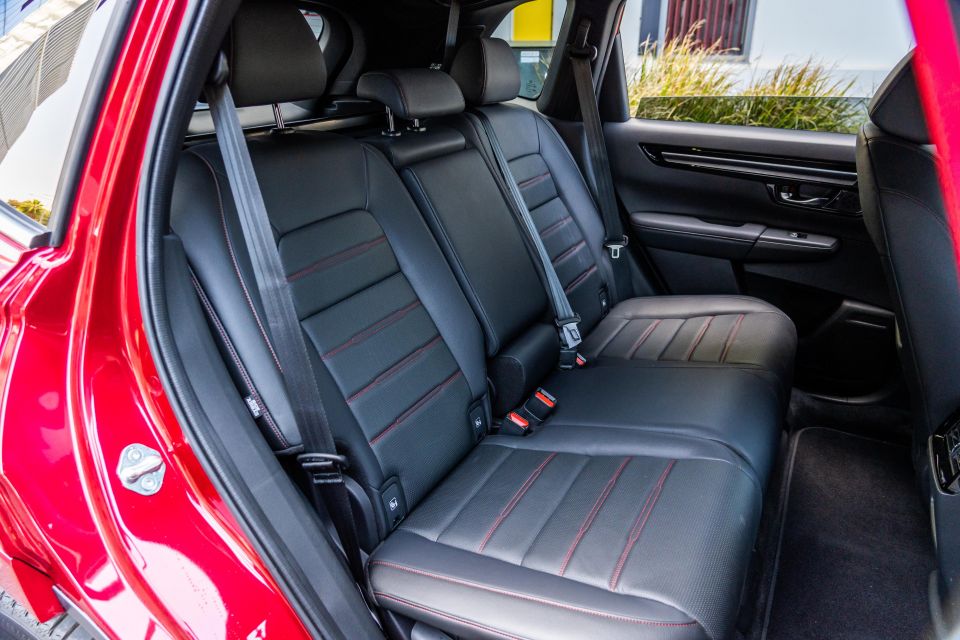
The metal-look trim running along the doors is subtly backlit by white ambient lighting, while the cupholders and base of the centre stack also have a subtle glow at night.
The steering wheel feels nice, though the switchgear on it is a bit plasticky – but still nicer than that of the last CR-V. The rear doors continue to open 90 degrees, which makes loading and unloading things like child seats that much easier.
There’s a spacious and comfortable backseat, with plenty of headroom despite the panoramic sunroof. Legroom is excellent, and the floor is almost completely flat – welcome news for the centre-seat occupant. If the centre seat is unoccupied, you can pull down a centre armrest.
Other backseat amenities include a pair of USB-C outlets plus air vents. There are ISOFIX anchor points for child seats on the outboard seats, plus top-tether points for all three seats.
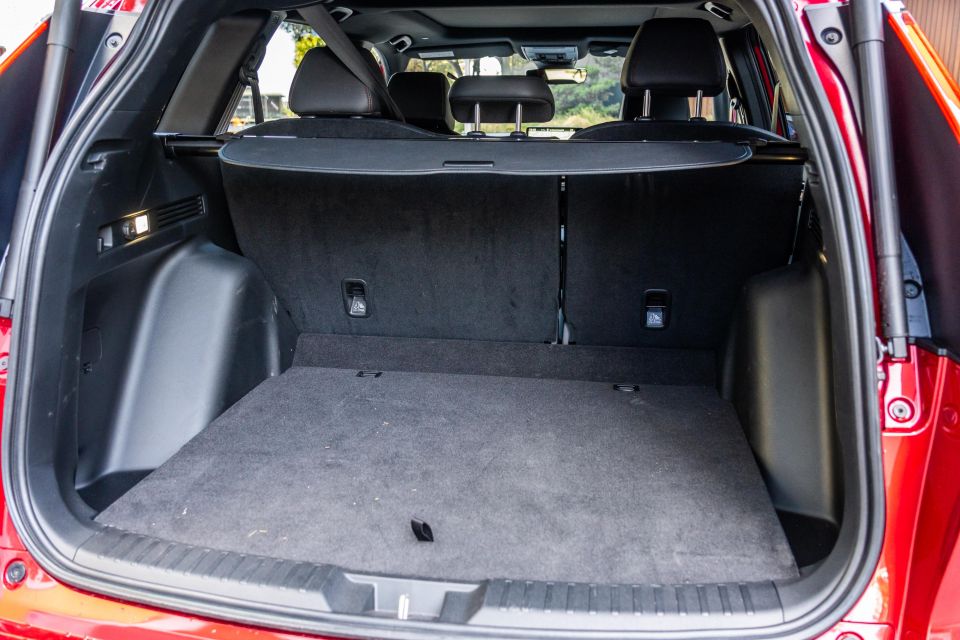
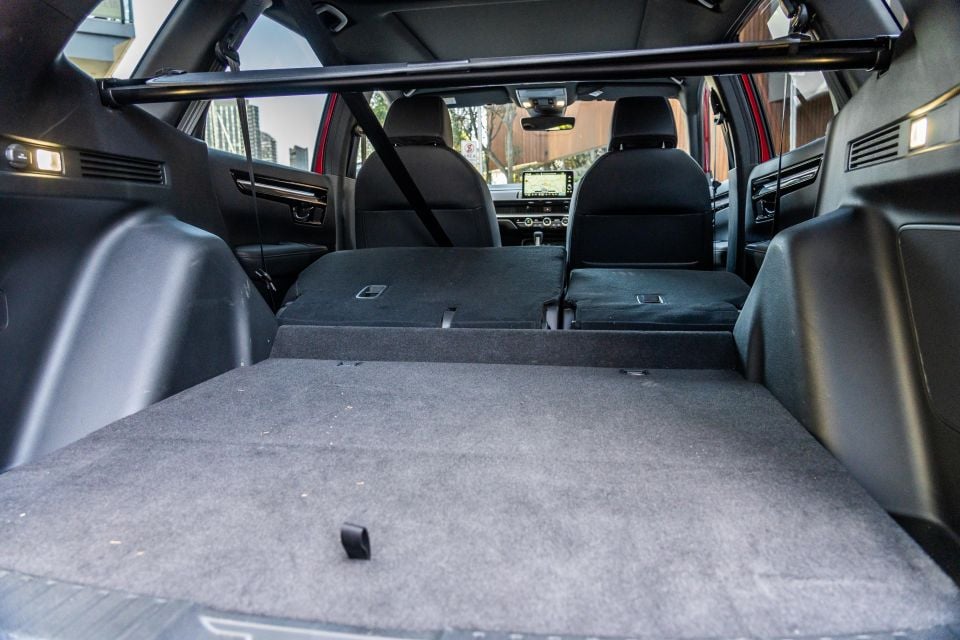
You can enjoy a better look at what your backseat passengers are doing by pulling down the sunglasses holder on the roof, revealing a conversation mirror.
You can also fortunately toggle off Honda’s walk away locking function, which is an acquired taste.
There’s a power tailgate, which opens to reveal a competitive 581L cargo space. The rear seats split and fold 60/40, though there are no levers in the boot to drop them. There is, however, a 12V power outlet back here.
Petrol-powered CR-Vs have a full-sized spare and seven-seat models have a space saver. However, the hybrid model draws the short straw and has only a tyre repair kit.
| Dimensions | Honda CR-V e:HEV RS |
|---|---|
| Length | 4704mm |
| Width | 1866mm |
| Height | 1681mm |
| Wheelbase | 2701mm |
| Cargo capacity | 581-1636 litres |
To see how the Honda CR-V lines up against the competition, check out our comparison tool.
The CR-V e:HEV RS mates a 2.0-litre naturally aspirated four-cylinder petrol engine with two electric motors.
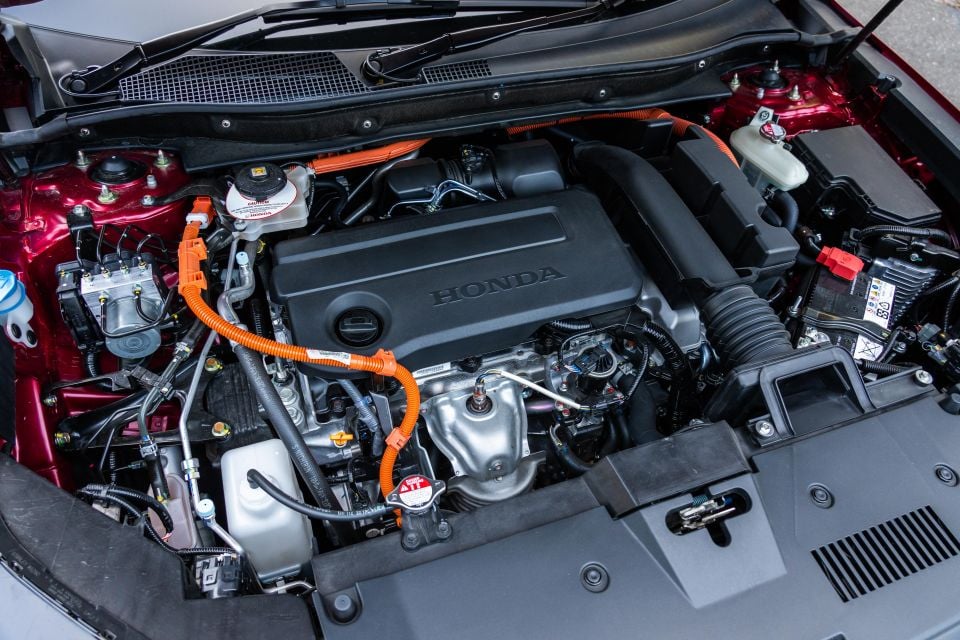
| Specifications | Honda CR-V e:HEV RS |
|---|---|
| Engine | 2.0L 4cyl HEV |
| Engine outputs | 109kW/182Nm |
| Electric motor outputs | N/A |
| System outputs | 135kW/335Nm |
| Battery | N/A |
| Transmission | E-CVT |
| Driven wheels | FWD |
| Weight | 1771kg (kerb) |
| Fuel economy (claimed) | 5.5L/100km |
| Fuel tank capacity | 57 litres |
| Fuel requirement | 91 RON |
| CO2 emissions | 125g/km |
| Emissions standard | Euro 6b |
| Braked tow capacity | 750kg |
To see how the Honda CR-V lines up against the competition, check out our comparison tool.
The CR-V is the picture of refinement.
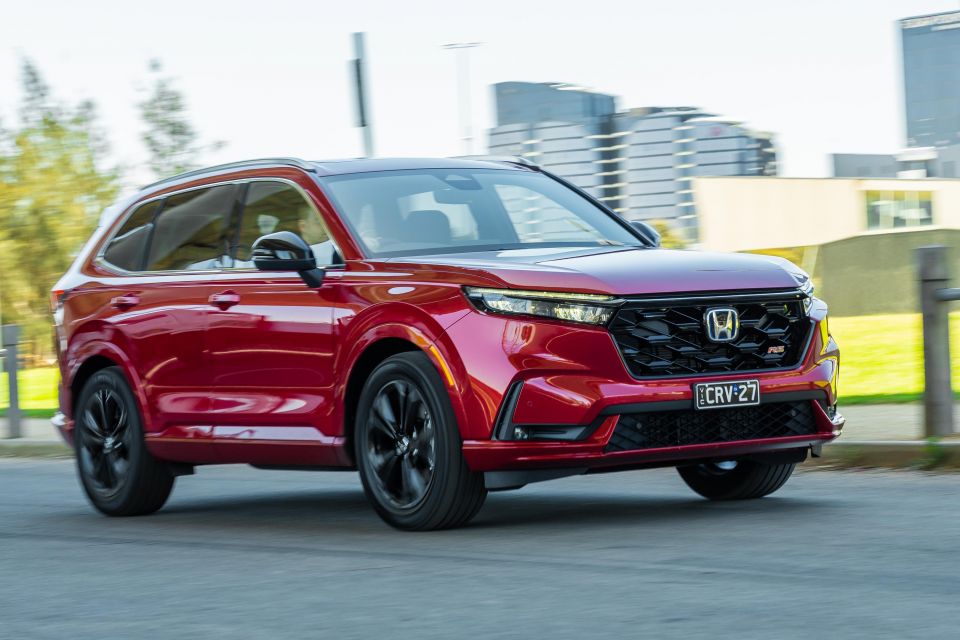
The transitions between petrol and electric power are seamless. Not only will the vehicle run on electric power at low speeds, we also observed the it going into EV mode while cruising along the highway at more than 80km/h.
You can see an energy flow readout in both the infotainment touchscreen and in the digital instrument cluster.
What makes the CR-V especially pleasant is the absence of rev flaring when the petrol engine kicks in. You instead feel shift points, while the engine has a more aurally pleasing, sportier engine note than a RAV4.
Body control is good, and the CR-V feels planted – hit a bump or rise in the road and it recovers quickly.
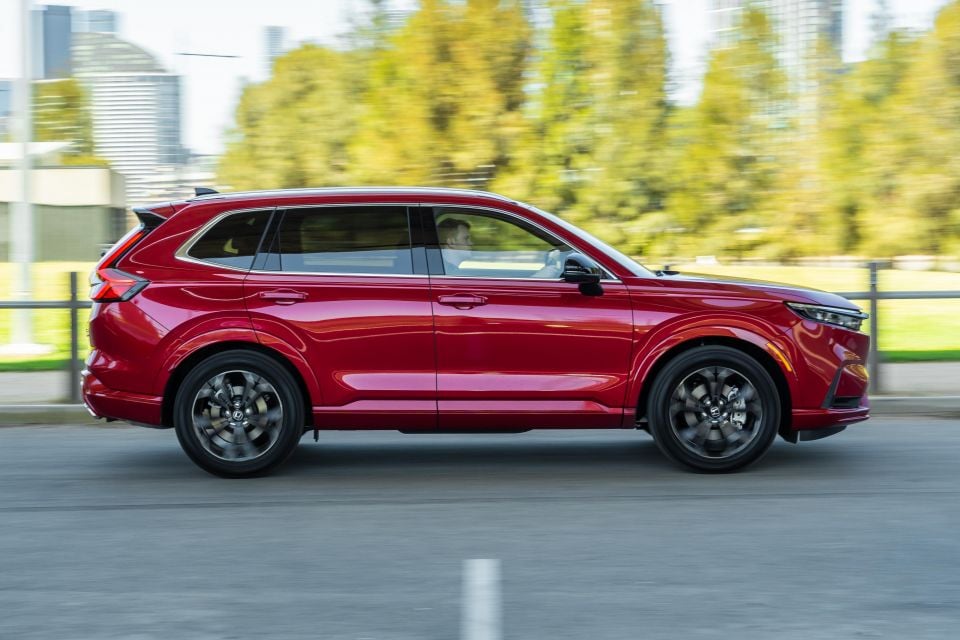
That also makes the CR-V a willing companion on a winding road. The steering mightn’t be the last word in road feel, but it has good weighting, while the handling is balanced and secure. You can hustle this along at a steady clip.
The CR-V’s hybrid powertrain is responsive, too. We actually left it in Eco mode, and it never felt lacking in power – even on steeper grades, or when overtaking.
We didn’t observe any wheel spin or torque steer. Would it be nice if an all-wheel drive hybrid model was offered here, as is the case in Thailand (where our CR-V is built)? Absolutely. But this front-driver is thoroughly pleasant to drive.
The cabin is well insulated from outside noise, and the engine – while pleasant to listen to – is subdued when it fires up. There’s a little bit of tyre roar on the coarse chip road surfaces common in rural Australia, but it’s hardly objectionable.
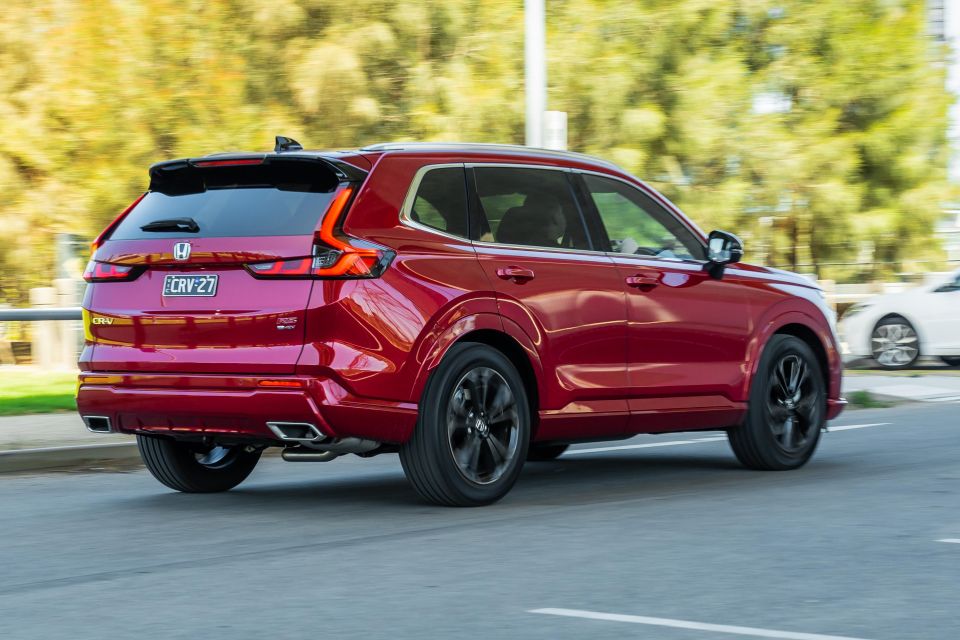
Where expert car reviews meet expert car buying – CarExpert gives you trusted advice, personalised service and real savings on your next new car.
Ride quality is quite good. Not once did we feel the CR-V crash over a bump, and it ate up patchwork pavement with aplomb. Only rarely did it feel a tad fidgety, which can probably be chalked up to its 19-inch alloys.
The driver assists are well-calibrated. Neither the lane-keep assist nor lane centring are overly obtrusive, and yet they do what they’re supposed to.
We also like the animation in the instrument cluster that shows where the vehicle is within its lane, which also shows other cars and trucks. Sure, this isn’t terribly useful, but it’s a slick-looking display.
The adaptive cruise control works well and there’s a speed limiter function as well, while the adaptive LED headlights provide excellent illumination. We also love the use of cornering lights.
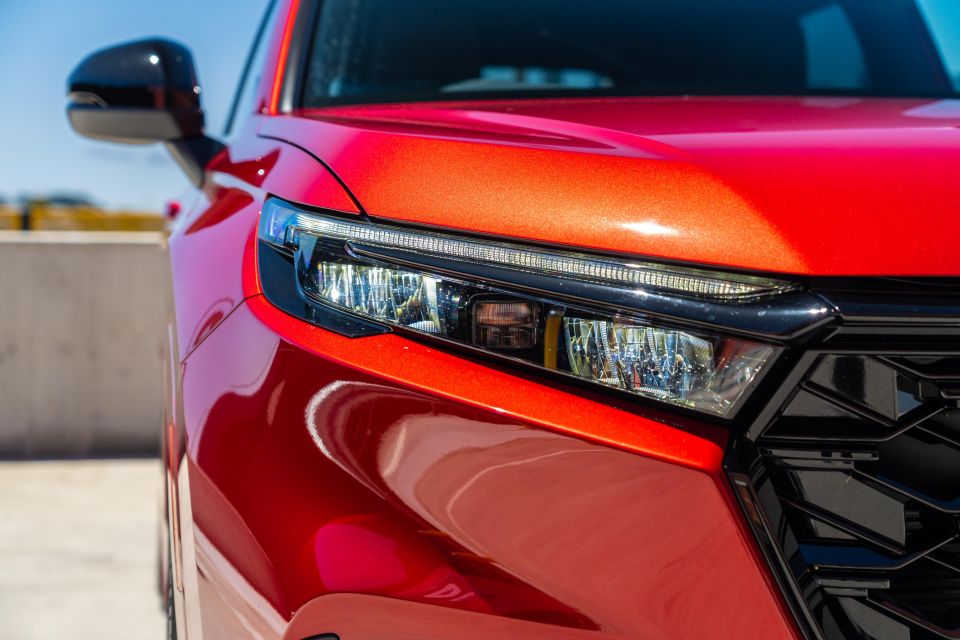

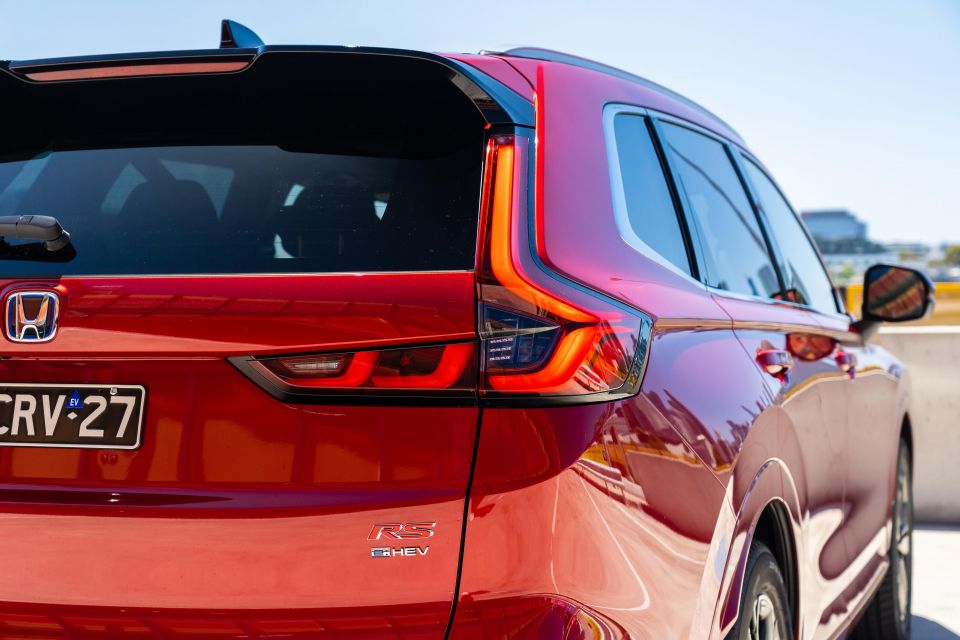

CR-V VTi X+ highlights:
CR-V VTi X7 adds:
CR-V VTi L adds (over VTi X):
CR-V VTi L7 adds (over VTi X7):
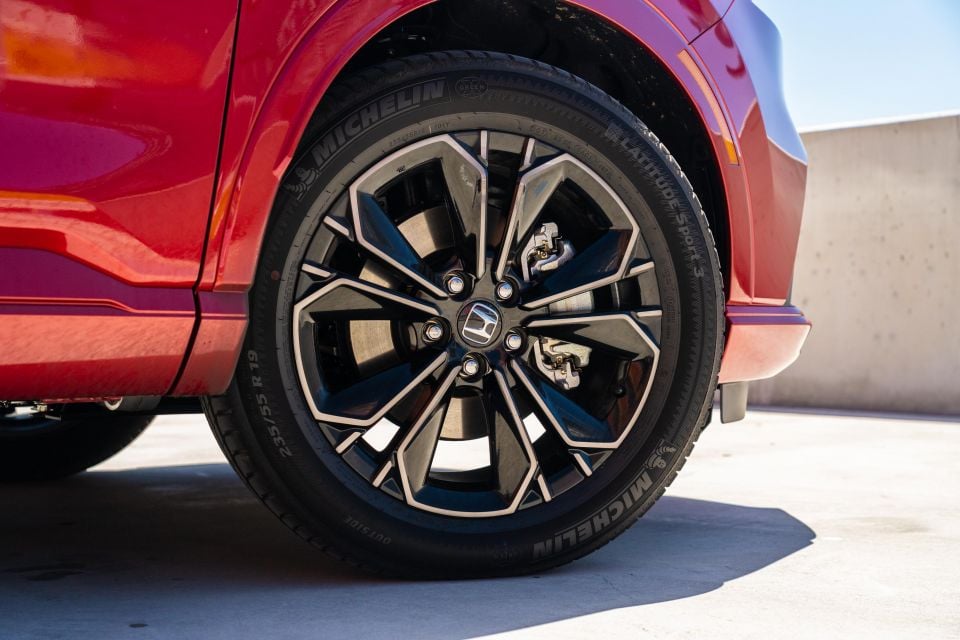

CR-V VTi LX adds (over VTi L):
CR-V e:HEV RS adds:
Honda also includes five years of Honda Connect. This allows you to use a smartphone app to do things like lock or unlock the vehicle, adjust the climate control, and monitor the vehicle’s location and speed.
All versions of the fifth-generation Honda CR-V wear a five-star ANCAP safety rating based on 2024 testing.
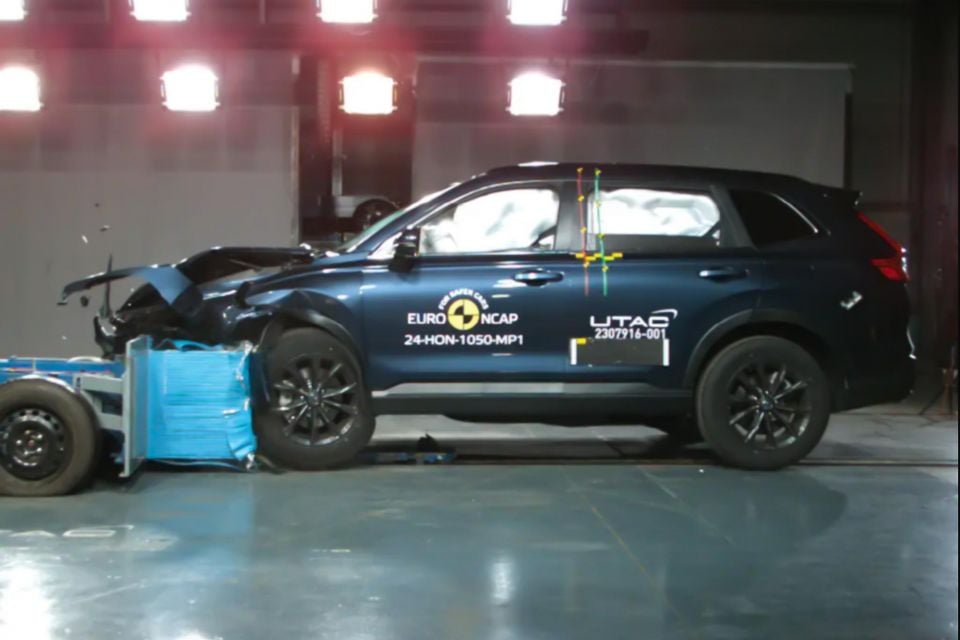
Standard safety features include:
The CR-V is backed by a five-year, unlimited-kilometre warranty.

Servicing intervals are on the shorter side at 12 months or 10,000km, however Honda caps the price of the first five services at $199 each.
That’s cheaper than even the RAV4 to service, with the Toyota’s first five services capped at $260 each. The RAV4 does, however, have longer 12-month, 15,000km intervals.
The old CR-V was a decent thing, but this new generation has vaulted towards the top of the class – and it’s arguably most impressive in hybrid guise.
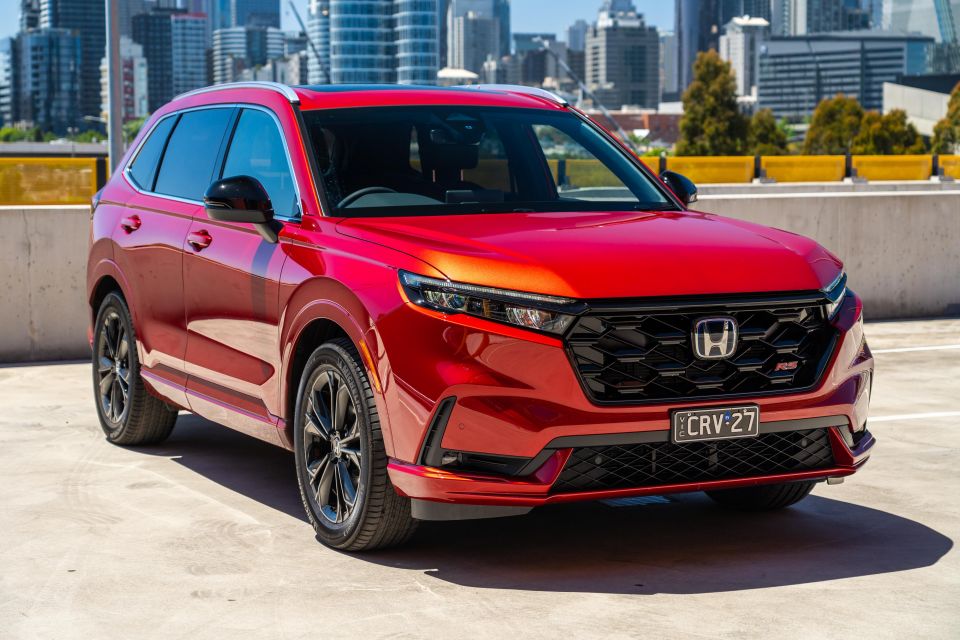
No, it’s not cheap, given you can get a front-wheel drive RAV4 Cruiser hybrid for a few thousand less. But the CR-V is more enjoyable to drive, while still offering supple ride quality and a refined cabin.
Though we ran the CR-V in Eco mode, this hybrid SUV still proved punchy and we were able to match its claimed combined cycle fuel economy.
An attractive, practical cabin, competitive technology and cheap servicing round out the CR-V’s list of attributes.
But Honda, we need more CR-V hybrids. There mightn’t be a seven-seat one available globally, but there are all-wheel drive hybrid options, plus more affordable options – bring them here.
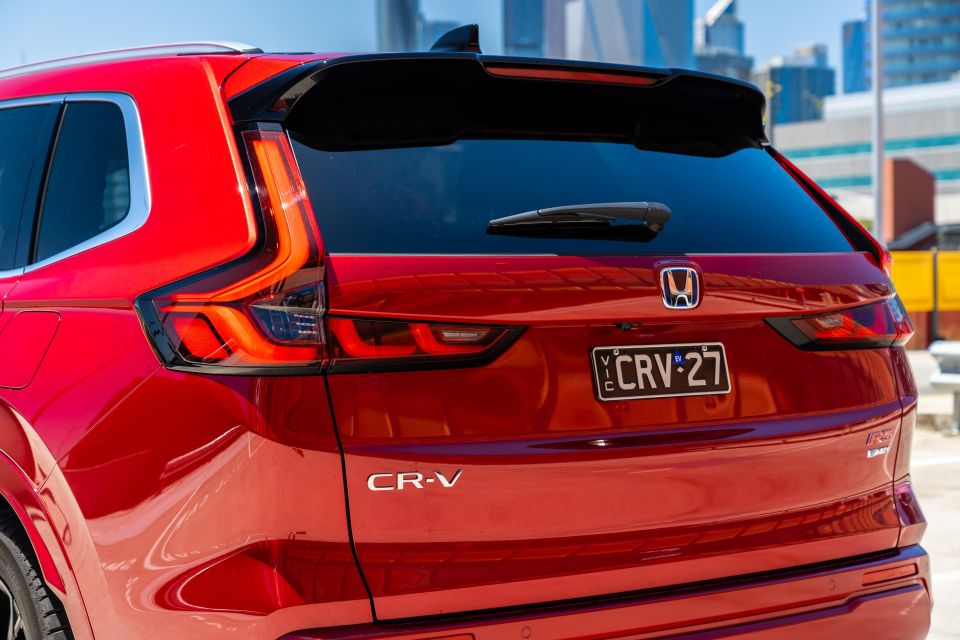
Interested in buying a Honda CR-V? Get in touch with one of CarExpert’s trusted dealers here
Click the images for the full gallery
MORE: Everything Honda CR-V
Where expert car reviews meet expert car buying – CarExpert gives you trusted advice, personalised service and real savings on your next new car.
William Stopford is an automotive journalist with a passion for mainstream cars, automotive history and overseas auto markets.


James Wong
2 Days Ago


Derek Fung
2 Days Ago


CarExpert.com.au
4 Days Ago
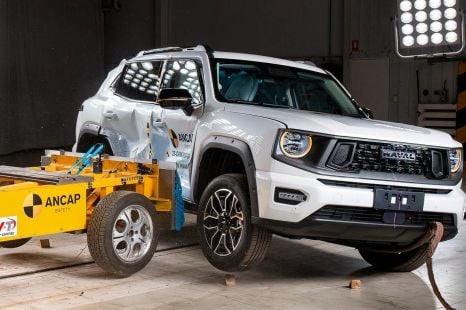

James Wong
4 Days Ago
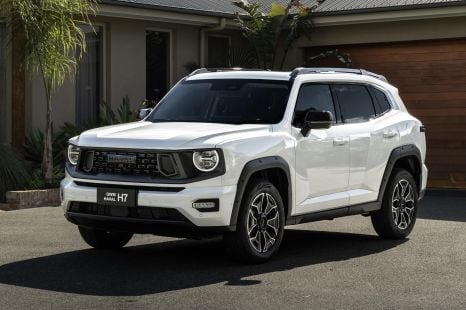

William Stopford
4 Days Ago
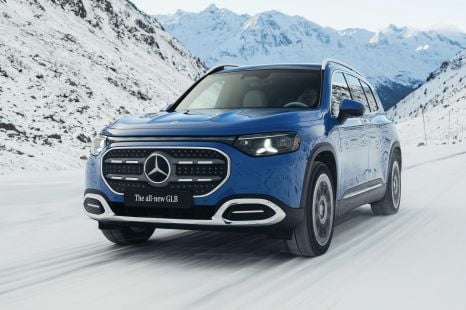
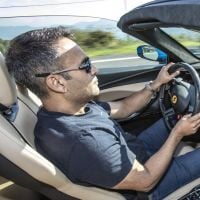
Gautam Sharma
15 Days Ago